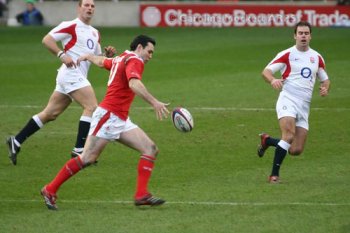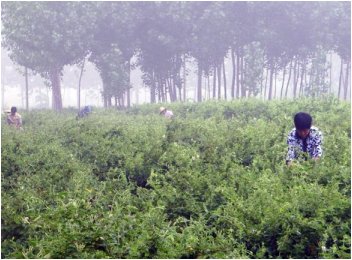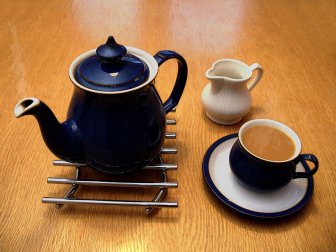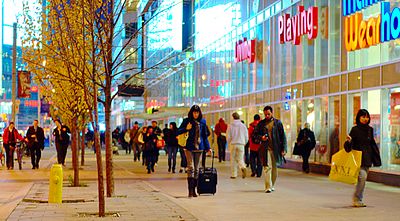Less Work, More Living, saving our sanity and the planet
Mood:
 celebratory
Topic: Inspirational
celebratory
Topic: Inspirational
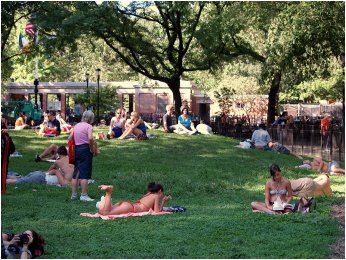
Working fewer hours could save our economy, save our sanity, and help save our planet.
Millions of Americans have lost control over the basic rhythm of their daily lives. They work too much, eat too quickly, socialize too little, drive and sit in traffic for too many hours, don’t get enough sleep, and feel harried too much of the time. It’s a way of life that undermines basic sources of wealth and well-being—such as strong family and community ties, a deep sense of meaning, and physical health.
Earn less, spend less, emit and degrade less. That's the formula. The more time a person has, the better his or her quality of life, and the easier it is to live sustainably.
Imagining a world in which jobs take up much less of our time may seem utopian, especially now, when a scarcity mentality dominates the economic conversation. People who are employed often find it difficult to scale back their jobs. Costs of medical care, education, and child care are rising. It may be hard to find new sources of income when U.S. companies have been laying people off at a dizzying rate.
But fewer work hours for people with jobs is a key step toward solving the unemployment crisis—while giving Americans healthier lives. Fewer hours means more jobs are available to people who need them. Living on less pay usually means consuming less, making more of the things one needs at home, and living lighter, whether by design or by accident.
Today, driven both by necessity and the deliberate choice to live simply, more Americans are shifting toward fewer work hours. It’s a trend that, if done correctly, could get us out of our current economic crisis and away from unsustainable economic growth.
Finding Time
Economists today focus solely on growth as a mechanism for job creation. But for much of the industrial age, falling hours have been roughly as important a contributor to employment as market growth.
The grueling schedules of the 19th century undermined health and prevented people from achieving what we now call quality of life. Hours of work in the United States began to decline after about 1870—from about 3,000 a year to 2,342 by 1929. In 1973 annual work hours stood at 1,887 (fewer than 40 hours per week, on average). If hours hadn’t fallen, unemployment would have grown even before the 1930s Depression.
Since the 1970s, Americans have been working longer. According to government survey data, the average working person was putting in 180 more hours of work in 2006 than he or she was in 1979. The trends are more pronounced on a household basis. Many more men are working schedules in excess of 50 hours a week. (Thirty percent of male college graduates and 20 percent of all full-time male workers are on schedules that usually exceed 50 hours.)
Not surprisingly, over the last 20 years, a large number of U.S. employees report being overworked. A 2004 study found that 44 percent of respondents were often or very often overworked, overwhelmed at their jobs, or unable to step back and process what’s going on. A third reported being chronically overworked. These overworked employees had much higher stress levels, worse physical health, higher rates of depression, and a reduced ability to take care of themselves than their less-pressured colleagues.
Doing it yourself, or self-provisioning, is now on the rise, both because of a culture shift and because in hard times, people have more time and less money.
But there are recent signs that a culture shift toward shorter hours has begun. In 1996, when I first surveyed on this issue, 19 percent of the adult population reported having made a voluntary lifestyle change during the previous five years that entailed earning less money. In a 2004 survey by the Center for a New American Dream, 48 percent did.
The stagnant economy, difficult as it is, represents an opportunity for expanding the norm of part-time work. In the first year of the recession, many businesses avoided layoffs by reducing hours through furloughs, unpaid vacations, four-day workweeks, and flex-time. By mid-2009, one study of large firms found that 20 percent had reduced hours to forestall job cuts.
Unfortunately, a lack of institutional support for short hours policies reversed many of those programs, as economist Dean Baker argued in a recent paper. Baker hypothesizes that businesses would provide an additional 1 to 2 million jobs a year if workers could collect unemployment insurance when they are on short schedules.
One thing we do know is that people who voluntarily start working less are generally pleased. In the New Dream survey, 23 percent said they were not only happier, but they didn’t miss the money. Sixty percent reported being happier, but missed the money to varying degrees. Only 10 percent regretted the change. And I’ve also found downshifters who began with a job loss or an involuntary reduction in pay or hours, but came to prefer having a wealth of time.
The Wealth We Make Ourselves
Earn less, spend less, emit and degrade less. That’s the formula. The more time a person has, the better his or her quality of life, and the easier it is to live sustainably. A study by David Rosnick and Mark Weisbrot of the Center for Economic and Policy Research estimated that if the United States were to shift to the working patterns of Western European countries, where workers spend on average 255 fewer hours per year at their jobs, energy consumption would decline about 20 percent. New research I have conducted with Kyle Knight and Gene Rosa of Washington State University, looking at all industrialized countries over the last 50 years, finds that nations with shorter working hours have considerably smaller ecological and carbon footprints.
There’s also a small but growing body of studies that examine these questions at the household scale. A French study found that, after controlling for income, households with longer working hours increased their spending on housing (buying larger homes with more appliances), transport (longer hours reduced the use of public transportation), and hotels and restaurants. A recent Swedish study found that when households reduce their working hours by 1 percent, their greenhouse gas emissions go down by 0.8 percent. One explanation is that when households spend more time earning money, they compensate in part by purchasing more goods and services, and buying them at later stages of processing (e.g., more prepared foods). People who have more time at home and less at work can engage in slower, less resource-intensive activities. They can hang their clothing on the line, rather than use an electric dryer. More important, they can switch to less energy-intensive but more time-consuming modes of transport (mass transit or carpool versus private auto, train versus airplane). They can garden and cook at home. They can meet more of their basic needs by making, fixing, doing, and providing things themselves.
Doing-it-yourself, or self-provisioning, is now on the rise, both because of a culture shift and because in hard times people have more time and less money.
In April 2009, according to a national survey, one in five Americans said they were making plans to plant a garden that year. After the recession hit, service-oriented businesses such as salons, pet groomers, and nannies experienced a decline in business as people began doing these things for themselves. An annual expo called Maker Faire that started in California has been attracting growing numbers of do-it-yourselfers and inventors. It’s spreading to new locations around the country, and attendance has reportedly quadrupled since 2006.
People are returning to lost arts practiced by earlier generations—woodworking, quilting, brewing beer, and canning and preserving. They are also hunting, fishing, and sewing. People engage in these activities because they enjoy them and they yield better-quality products or products that are not easily available. Producing artisanal jams, sauces, and smoked meats, or handmade sweaters, quilts, and clothing makes these pricey items affordable.
Self-provisioning is also getting popular in housing. For example, the movement toward straw-bale homes has taken off in the Southwest. Straw-bale construction has become prevalent enough that some localities have introduced code for it, and there are even banks that lend for these structures. People are also experimenting with the use of compressed earth bricks, poured earth, “papercrete” (which uses recycled paper and a small amount of concrete), and a variety of other materials. New Englanders have revived the colonial-era tradition of community barn-raisings, only now they’re coming together to build yurts.
As failed housing markets around the country stagnate, one can expect more real estate refugees to construct their own debt-free shelter with recycled, low-cost, or no-cost materials.
Self-provisioning is also a spur to entrepreneurial activity. Most people who practice it don’t self-provide everything. They find some productive activities they prefer, are more skilled at, or can do more easily. They trade or sell what they’re best at producing. With this specialization, self-provisioning becomes a pathway to incubating a set of small businesses that will flourish as the sustainable economy takes off.
A large-scale switch to less work and more production and self-provisioning at home will require some collective solutions. We need systems that provide basic security to all individuals and families—from childhood through old age. Access to basic needs such as education and health care must be widely affordable.
But it’s possible for many people to take small steps—right now—toward fewer job hours and more self-sufficiency. There are challenges, to be sure, but for many, the switch from paper-pushing to gardening has been welcome. Self-providers value their newfound skills, love the chance to be creative, and are getting satisfaction and security from constructing a more self-reliant lifestyle. The ability to work for oneself is highly valued. They are nourished by connection with the earth. Perhaps most important, they are rewarded by the opportunity to live without endangering others and the planet.
by Juliet Schor , Yes Magazine, Jan 12, 2012
Article Source - dailygood.org
Posted by Neil Bartlett DHyp M.A.E.P.H
at 01:01 CET
Updated: Monday, 30 January 2012 01:18 CET
